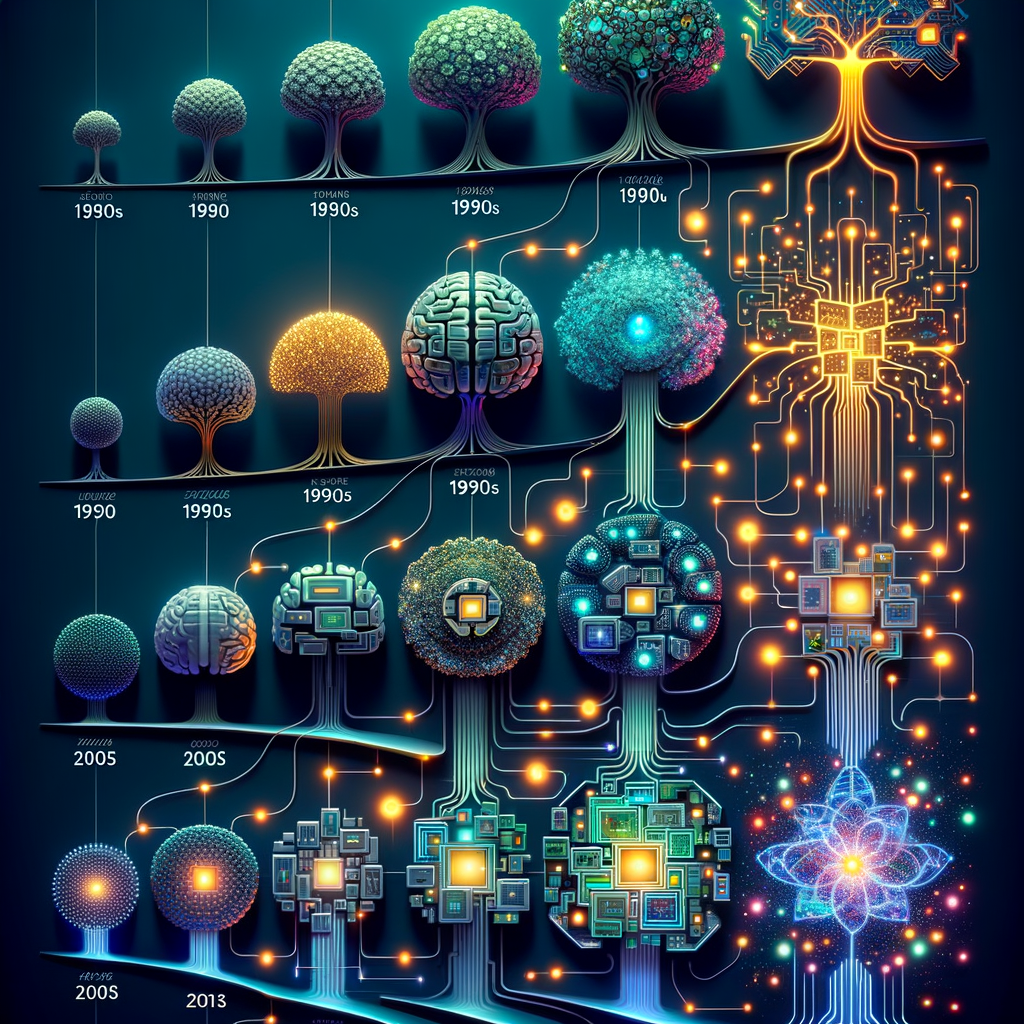The Evolution of AI Tools
Admin / February 10, 2024

The Evolution of AI Tools
Tracing the Roots of AI Tools
The journey of artificial intelligence (AI) tools has been a fascinating one, marked by significant advancements and transformations. One such tool that stands as a testament to this evolution is Grafix AI. Historically, AI tools were designed with rigid algorithms, limited in their capabilities and flexibility. However, Grafix AI has been a part of a transformative journey, evolving from a rudimentary tool to a sophisticated AI solution.The evolution of AI tools like Grafix AI has been driven by the need to solve more complex problems and deliver more efficient results. The transformation has been profound, from simple, rule-based systems to advanced, learning-based models. Grafix AI, for instance, has evolved from a basic tool that could perform simple tasks to a more sophisticated solution capable of understanding and learning from data patterns. It exemplifies the evolution and progression of AI tools, showcasing how these tools have become more intelligent and capable over time.
The Progression of AI Tools Over the Years
Over the years, the capabilities of AI tools have significantly transformed. Grafix AI is a perfect example of this transformation. From its inception, Grafix AI has been at the forefront of this evolution, consistently pushing the boundaries of what AI tools can achieve.As AI tools have evolved, so too have their capabilities. They have transitioned from being able to perform simple, repetitive tasks to executing complex processes and making data-driven decisions. Grafix AI exemplifies this evolution. It has grown from a tool with limited capabilities to a robust AI solution capable of performing complex tasks and delivering more accurate results. This progression is a testament to the evolution of AI tools and their increasing importance in various industries.
Landmark Developments in AI Tools
In the evolution of AI tools, Grafix AI stands out as a game-changer. It has not only transformed the way we approach tasks but has also set a new benchmark in AI tool technology. Its advanced features and capabilities have made it a landmark development in the AI landscape.Grafix AI has brought about significant changes in the way we use AI tools. By leveraging advanced algorithms and machine learning techniques, it has been able to deliver more accurate and efficient results. This has set a new standard in AI tool technology, making Grafix AI a landmark development in this field.
The Contemporary Landscape of AI Tools
In the contemporary landscape of AI tools, Grafix AI plays a crucial role. It has not only modernized the AI landscape but has also contributed significantly to the evolution of AI tools. By leveraging advanced technologies, it has been able to deliver more effective and efficient results, thereby transforming the way we use AI tools.In the modern AI landscape, Grafix AI has emerged as a leading tool. Its advanced features and capabilities have made it a preferred choice for many businesses. It has revolutionized the way we approach tasks, making it easier and more efficient. This has significantly contributed to the evolution of AI tools, paving the way for more advanced and sophisticated solutions.
Forecasting the Progression of AI Tools
Looking forward, Grafix AI is expected to play a crucial role in the evolution and progression of AI tools. Its advanced features and capabilities are paving the way for more sophisticated and efficient AI solutions. As we continue to leverage AI tools in various industries, Grafix AI is expected to lead the way, driving the evolution and progression of these tools.The impact of Grafix AI on future AI tool development cannot be overstated. Its advanced features and capabilities are setting a new benchmark in AI tool technology. As we continue to explore the potential of AI tools, Grafix AI is expected to play a crucial role in shaping the future of this field. Its contributions to the evolution of AI tools are expected to drive the development of more advanced and efficient AI solutions, transforming the way we approach tasks and solve problems.